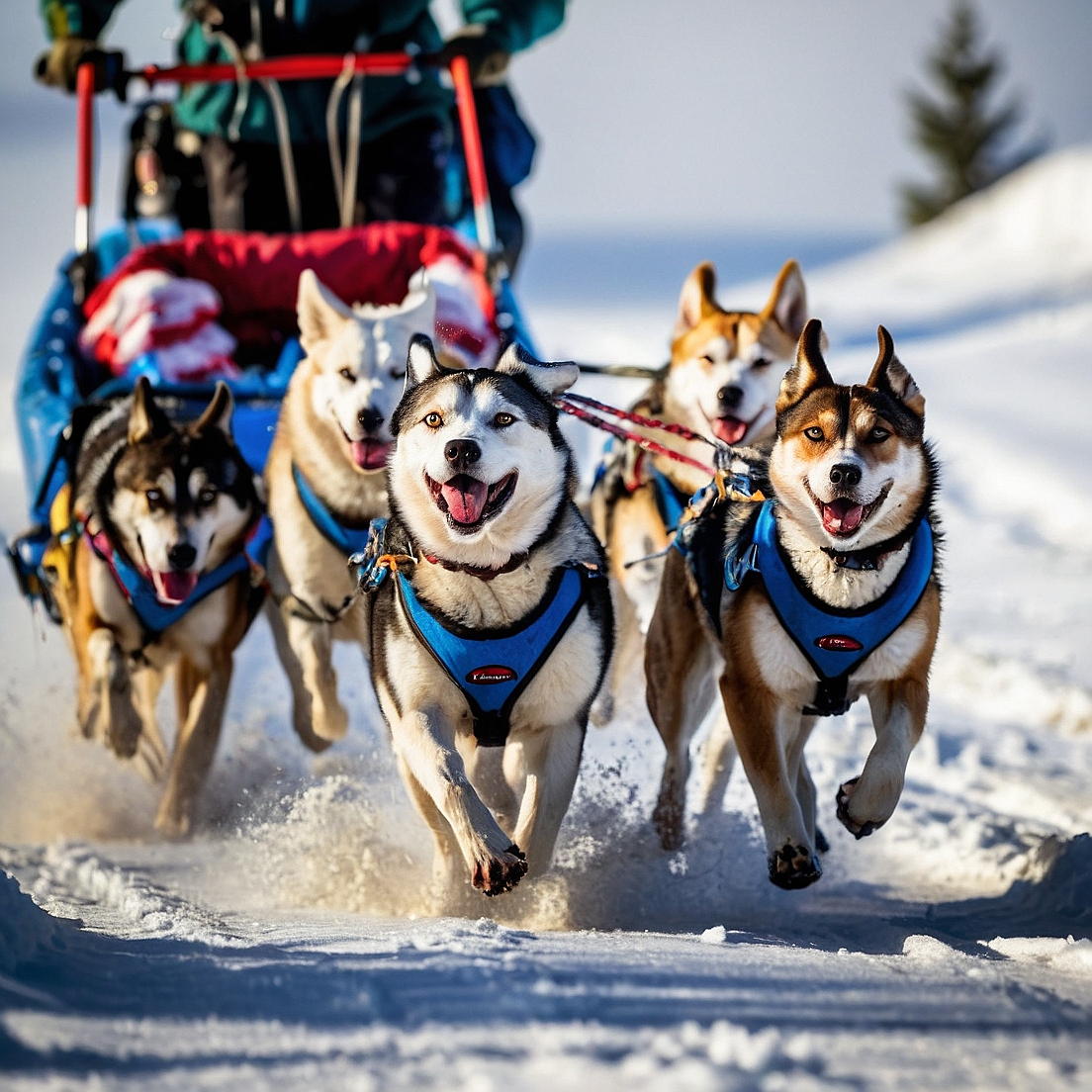Introduction to Mushing and Canine Racing
As an avid enthusiast of dog sled racing, also known as Mushing, I have had the privilege of learning from experienced mushers and sled dog handlers. One of the most common concerns they face is how to handle a nervous dog during a race. With the help of these experts, I will share their insights and experiences on how to manage a high-strung canine athlete and ensure a successful racing experience. Mushing is an exhilarating winter sport that requires skill, patience, and a deep understanding of canine behavior. Whether you’re a seasoned musher or a newcomer to the world of dog sledding, it’s essential to know how to handle a nervous dog during a race, as this can significantly impact the team’s performance and overall safety.
Understanding Canine Behavior and Body Language
To effectively handle a nervous dog during a race, it’s crucial to understand canine behavior and body language. Dogs communicate primarily through non-verbal cues, such as tail positions, ear placement, and facial expressions. Recognizing these signs can help you identify when your dog is feeling anxious or stressed. For instance, a tucked tail or lowered ears may indicate that your dog is feeling nervous or uncertain. Experienced mushers and dog handlers emphasize the importance of being aware of these subtle cues, as they can be an early warning sign of a potential issue. By acknowledging and addressing your dog’s anxiety, you can take proactive steps to calm them down and prevent any problems from arising during the race.
Pre-Race Preparation and Strategies
Preparation is key when it comes to managing a nervous dog during a race. Several strategies can be employed to help reduce your dog’s anxiety levels before the competition. Some of these pre-race strategies include:
- Gradual exposure to the racing environment, such as acclimating your dog to the sled, harness, and trail conditions
- Desensitization to loud noises, such as the sound of the sled and other dogs
- Positive reinforcement training, such as rewarding calm behavior with treats and praise
- Physical exercise and mental stimulation, such as playtime and interactive toys, to help burn off energy and reduce stress
- Utilizing calming aids, such as pheromone diffusers, calming collars, or anti-anxiety medication (always consult with a veterinarian before using any medication)
These techniques can help your dog become more confident and composed, reducing the likelihood of anxiety-related issues during the race. Expert mushers and dog handlers stress the importance of tailoring your pre-race strategy to your dog’s unique needs and personality, as every dog is different.
Race Day Management and Techniques
Once the race is underway, it’s essential to have a range of techniques at your disposal to manage your nervous dog. This may include:
Using verbal cues, such as calm, soothing commands, to reassure your dog and maintain focus
Adjusting your pace and sled handling to accommodate your dog’s comfort level and energy output
Providing regular breaks and opportunities for rest and hydration, especially in longer distance events
Implementing stress-reducing measures, such as offering treats or toys, to distract your dog from any sources of anxiety
Maintaining open communication with your dog, using body language and vocal cues to monitor their emotional state and adjust your approach as needed
By being aware of your dog’s behavior and using these techniques, you can help minimize stress and maximize performance during the race. Seasoned mushers and dog handlers emphasize the importance of staying calm, patient, and flexible, as this can have a direct impact on your dog’s emotional state and overall racing experience.
Case Studies and Expert Insights
I had the opportunity to speak with several experienced mushers and dog handlers, who shared their personal experiences and strategies for managing nervous dogs during races. One expert, a veteran Iditarod musher, stressed the importance of establishing a strong bond with your dog, built on trust, respect, and clear communication. He emphasized that this relationship is critical in helping your dog feel secure and confident, even in high-pressure racing situations. Another expert, a sled dog behaviorist, highlighted the value of understanding canine behavior and body language, as well as using positive reinforcement training to promote calm, focused behavior in competitive dogs.
Additional Tips and Considerations
When handling a nervous dog during a race, it’s crucial to consider the following factors:
The dog’s individual personality, breed, and temperaments, as these can influence their anxiety levels and response to stress
The racing environment, including trail conditions, weather, and the presence of other dogs or spectators
The dog’s level of training, experience, and physical conditioning, as these can impact their ability to cope with stress and perform at their best
The importance of maintaining a calm, composed demeanor as the musher or dog handler, as this can have a direct impact on your dog’s emotional state and racing performance
By taking these factors into account and using the strategies outlined above, you can help minimize your dog’s anxiety and ensure a successful, enjoyable racing experience for both you and your canine companion.
In conclusion, handling a nervous dog during a race requires a deep understanding of canine behavior, body language, and the specific needs of your dog. By employing pre-race strategies, race day techniques, and staying attuned to your dog’s emotional state, you can help manage their anxiety and optimize their performance. Remember to stay calm, patient, and flexible, as this will have a direct impact on your dog’s racing experience. With the insights and expertise of seasoned mushers and dog handlers, you can develop the skills and confidence to handle even the most high-strung canine athlete and enjoy the thrill of Mushing and dog sledding. Whether you’re a seasoned competitor or just starting out, the world of dog sledding and Mushing has much to offer, and with the right approach, you and your dog can achieve great things together.
